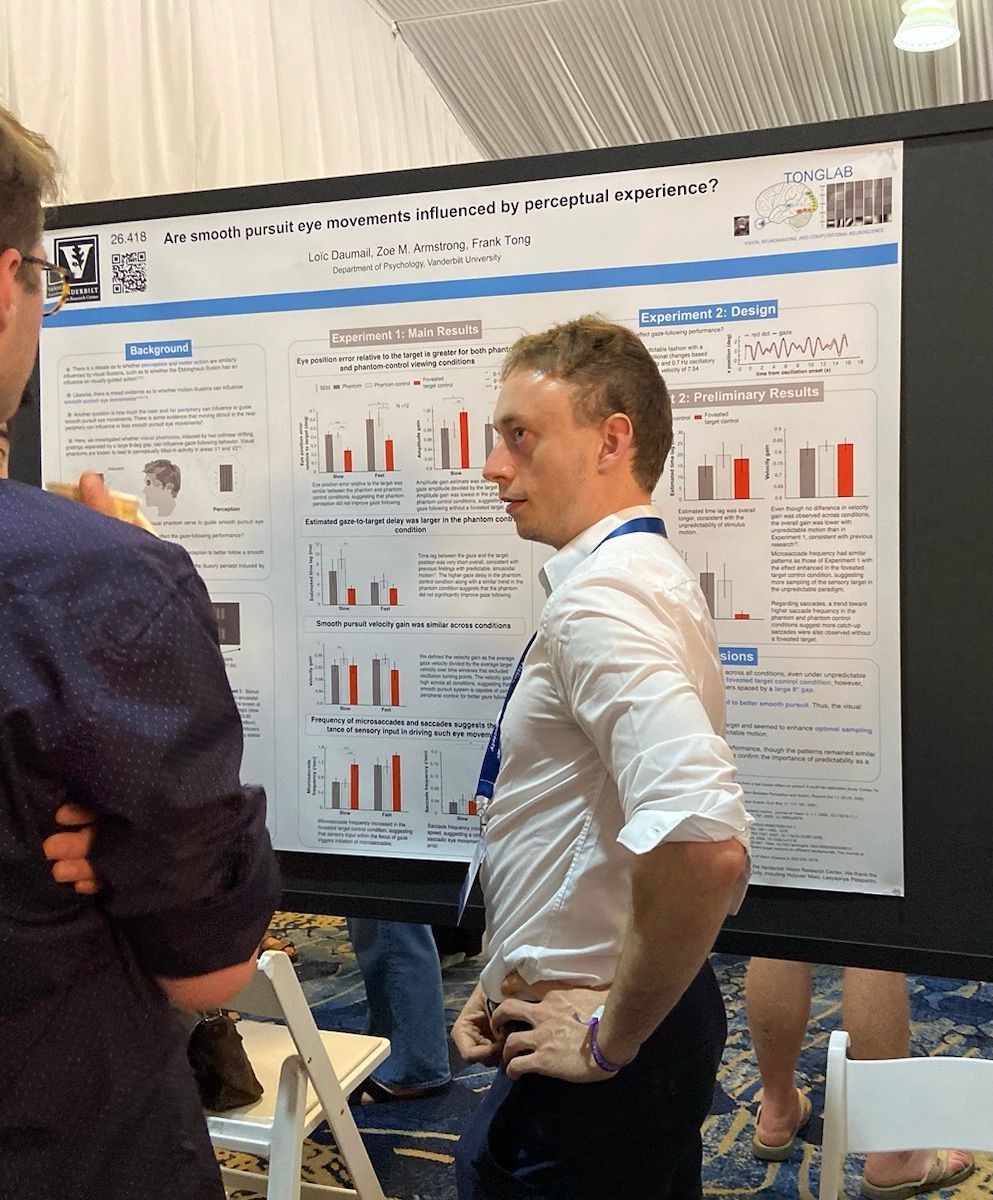About two months ago, I was able to attend the VSS annual meeting 2023 at St Petersburg, FL. This was a very exciting event where I could interact with experts in many subfields of vision sciences, and all this (almost) on the beach!
I presented the poster in the picture below, entitled "Are smooth pursuit eye movements influenced by perceptual experience?".

If you'd like to know more, please, see below the abstract:
Loic Daumail (loic.daumail@vanderbilt.edu), Zoe Armstrong, Frank Tong; Vanderbilt University
There is a debate as to whether perception and action are similarly influenced by visual illusions or whether visuomotor actions are less susceptible to illusions. Here, we investigated this question by measuring smooth pursuit eye movements (SPEMs) while observers tracked a moving visual phantom illusion. Visual phantoms can occur when two collinear low-spatial-frequency gratings, separated by a large gap, are presented against a dark background: the darker portions of the inducing gratings appear to continue through the blank gap. Our displays consisted of two collinear vertical gratings that oscillated sinusoidally, separated by a 4-degree gap. Participants were instructed to make horizontal SPEMs along the gap region, following the shifting position of a specific dark stripe above and below the gap. The gratings were presented either on a dark background to elicit vivid phantoms or on a mean-luminance background to elicit negligible phantoms (i.e., phantom control). If SPEMs reflect perception, one would expect more accurate smooth pursuit for visual phantoms than for the phantom control. We also included a foveated-target control condition in which participants had to track a single oscillating red dot. If SPEMs reflect perception, one would expect that SPEMs for visual phantoms should better match those obtained with the foveated-target control. A sinusoidal model of the horizontal eye position revealed no significant differences in amplitude, frequency, phase or offset between the two grating conditions. By contrast, SPEMs for both visual phantoms and the phantom control generated larger position errors in comparison to the foveated-target control condition (p < 0.05). From these results, we find no evidence to suggest that the perception of visual phantoms can support more precise motor control of SPEMs.
Acknowledgements: Supported by NIH R01EY029278 grant.